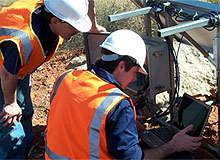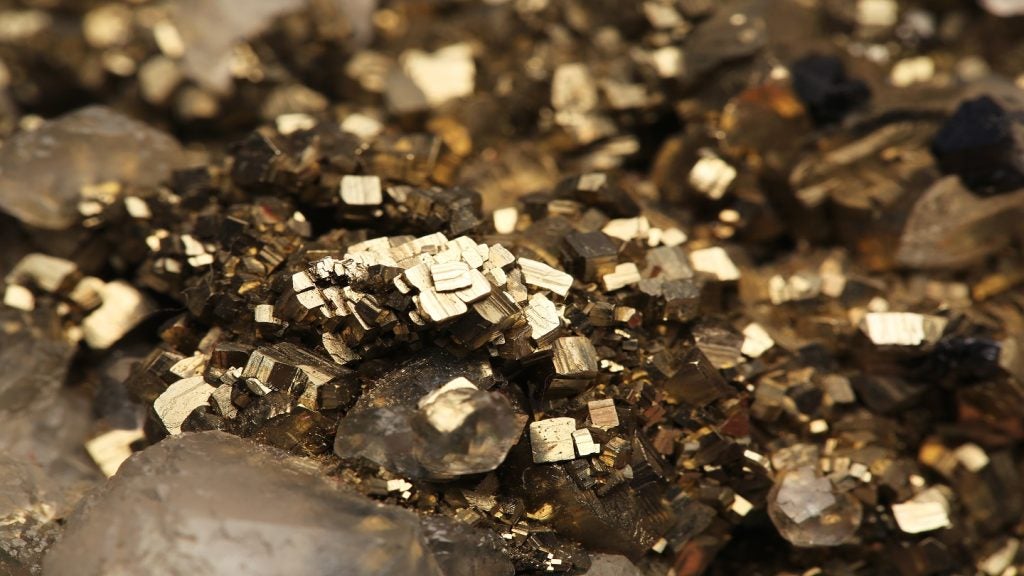
If one thing has remained a constant throughout the history of mining, it is ground support. While techniques and technology have changed beyond recognition, the theory remains the same: no ground support, no mining – or at least no mining without serious risk to your health.
In an industry where pressure is mounting on global corporations to demonstrate due diligence, seismic monitoring systems are being incorporated into mining companies daily operations.
Recent mining events like the US’s Crandall Canyon disaster have seen mine safety rise up the political agenda. Similarly, in traditionally less regulated, more accident-heavy Asian markets, safety has also become more of a priority.
In both cases this has been assisted by increased government intervention. In China, the exposure of mine managers to prosecution for health and safety contraventions in their mines has also assisted.
As a result, microseismic monitoring systems, of the type developed by companies like the Canada-based Engineering Seismology Group (ESG), play a critical role in ensuring the safety of mining operations
Understanding mine seismicity
The key to a mining operation is to understand the seismicity of rock mass, with the primary purpose of creating good ground support to maintain safe excavation. Seismic monitoring equipment is used in order to identify both potential hazards caused by changing ground conditions, and to maximise mine production through preventing seismicity related delays.
How well do you really know your competitors?
Access the most comprehensive Company Profiles on the market, powered by GlobalData. Save hours of research. Gain competitive edge.

Thank you!
Your download email will arrive shortly
Not ready to buy yet? Download a free sample
We are confident about the unique quality of our Company Profiles. However, we want you to make the most beneficial decision for your business, so we offer a free sample that you can download by submitting the below form
By GlobalDataSeismic monitoring helps locate areas where rock mass failure is causing seismic events. A seismic event can generally be described as the vibration of rock, slipping or breaking, something common in an underground mine setting, with constant drilling and blasting.
While most seismic events are minor, stress change events for example rarely register more than 0 – 0.5 in Richter magnitude, larger events, such as fault slips, can register as much as up to +5 and cause considerable damage to operations.
By understanding rock mass behaviour mining companies can begin to assess the size of any potential hazards and build a picture of the worst-case scenario.
ESG is one of the market leaders in microseismic monitoring. Initially borne out of a research initiative tasked with investigating rock bursts and stress redistribution, ESG’s reach now spreads across the mining world.
Their first commercial application came on to the market in 1993 and since then they have been at the cutting edge of microseismic monitoring technology.
ESG Sales and Development head Jamie Alexander says their systems are used to monitor rock activity and provide warning systems.
“The key is all about understanding rock behaviour, to be able to visualise trends in rock behaviour so you can enhance safety and improve mine design.”
How it works
Advanced microseismic sensors and tiltmeters are installed at strategic places around a mine to measure ground vibrations. These are then picked up by a digital seismic data recorder that acquires and processes the data to build an accurate picture of seismicity through 3D modelling techniques.
Data is continuously transmitted to the surface and can be accessed through the internet in real-time from anywhere on the planet.
According to Alexander, time, location and size are the three key components to understanding ground instabilities. Through using microseismic monitoring equipment, active faults and fractures can be identified, as can areas of potential rock fall and roof fall hazard.
ESG’s unique web-based software package has evolved through their work across the upstream energy, mining and geotechnical industries.
This multi-sector expertise has been crucial in developing a fully integrated system able to provide real-time monitoring, processing and analysis of information on the response of a rock mass to excavation or extraction.
Critical stuff when it comes to influencing a mine operating plan or preventing dangerous events from taking place.
It is not all about safety either, for if mine operators increase their knowledge of the rock mass, they can enhance productivity through reducing downtime and deploying their workforce away from areas that are experiencing heightened seismic activity. Mine design is another area that benefits from microseismic monitoring; through understanding how ground conditions are changing, mine design and sequencing can be optimised at an earlier stage in the life of a mine.
Microseismic developments
In terms of developing technology, Alexander feels that for the moment, the pinnacle has been reached. The future challenge lies in refining the highly advanced technology that is already available on the market. Through improving features that will enhance performance and further enable remote monitoring; integrating with other monitoring equipment to further develop the seismic picture; and increasing networking capacity and data communications.
Microseismic monitoring equipment will also be used to greater effect with other ground support equipment, helping mine operators assess the right areas to install ground support such as meshing and shotcrete, and not to waste it in areas where it’s not required.
“Unfortunately you can’t see into the future using microseismic technology, but what you can do is provide some pretty accurate near-term forecasting. Predicting the future would be the panacea,” says Alexander.
He believes when it comes to microseismic monitoring technology it is more a case of prevention rather than prediction.
If you were to cast an eye to the future however microseismic monitoring would be sure to loom large. In a growth industry driven by corporate giants where safety, problem-solving and productivity are paramount, it ticks all the right boxes.







